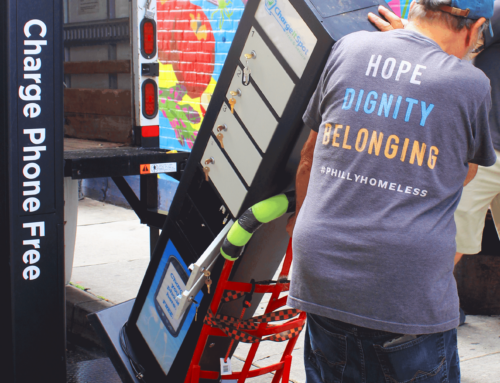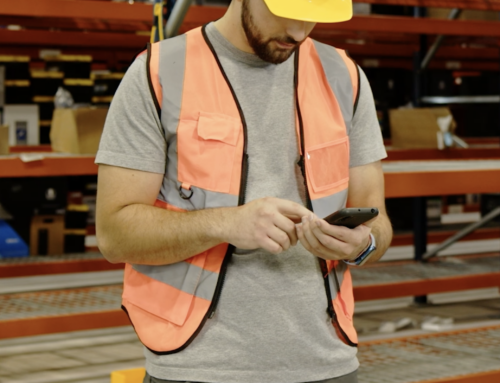The Iterative Process of ARC

Written by Khalid Alzubi
In 2021, ChargeItSpot identified the need for a solution that would prevent companies from having to replace so many of their handheld devices each year. ChargeItSpot found that the mismanagement of mobile devices was causing companies millions of dollars in replacement and repair costs, all due to a lack of device accountability and visibility.
Drawing on the expertise that the company has in its public phone charging lockers, ChargeItSpot created ARC: a high-capacity kiosk that is built to hold, charge, and keep track of mobile devices for corporations. In the past year and a half, ARC has gone from an idea to physical deployments with some of the largest brands in the world.
As the newest ARC units get ready to make their trade show debut in 2023, the team wanted to showcase some of the efforts that have gone into making ARC what it is today.
This month’s interview features Sheri Tate, ARC’s SVP of Product Strategy. Sheri and her team are the architects of the ARC software, and they oversee the manufacturing of the kiosk housing. Below, she walks through the iterative process her team has taken to bring ARC from concept to a state-of-the-art intelligent locker system in just over a year:
What were the early ideation stages like when you were coming up with ARC’s look and function?
Initially, that process started by speaking to clients about the challenges they were facing around managing their company-owned devices. We learned about existing pain points, inefficiencies, and problems our clients needed to solve and used that feedback to develop an early version of the ARC software that could run on our 8-locker kiosks.
After we got the software solution back in front of clients and validated the market opportunity, we began to conceptualize a new hardware solution that could manage a significantly greater number of devices at a single location.
In terms of the visual aspects, we wanted an iconic look that conveyed safety and security with a somewhat industrial feel that was suitable for back-of-house deployments.
How did you decide which design firm to use?
We sought out firms that had experience designing both consumer and technical products, and experience with design for manufacturing (DFM). Ultimately, the decision came down to how well we thought our teams would work together, and we couldn’t be happier with the choice we made!
What were some of the original parameters you gave to the design firm to start with?
There was quite a long list in our request for proposal, but a few important parameters included: ease of serviceability for technicians, windows for users to be able to see if a device was inside the locker or not, locker status indicator LEDs, and ensuring devices inside the lockers can receive WiFi signals which is important for software updates. There was a lot of thinking that went into the design on that front.

How did you decide on how many lockers you wanted? What was the significance behind 48 lockers?
Our goal was to design cabinets that could store as many handheld devices as possible in a compact space. We found that 12 lockers per “column” ensures that the lowest locker is not too uncomfortably low for someone to reach down and open, and the highest locker is not too high for the average person. From there, we achieved modularity by designing a Base Unit that could have either one or two 24-locker Extension Units on each side to meet our customers’ device management needs.

ARC has undergone a number of design changes in the past two years. How has the 48-locker unit evolved since its original iteration?
We’ve made improvements to the design of the thermal airflow paths inside the kiosk to better facilitate airflow, which you can see in the windows of the early rendering below. We also went from a flat roof, also shown here, to an angled roof to prevent users from placing coffee cups or other liquids that might spill on top of the unit.

What have been the major milestones to get to where we are with ARC now?
The first major milestone was introducing the first 48-locker unit at the MODEX Supply Chain Show in March 2021, less than a year after we started designing. The interest shown by the market at that show was incredible for further validating our proof of concept.
After that, deploying early units with clients for real-world feedback was key. And our clients have recognized tangible, measurable efficiency improvements, reduction of shrink, and improved user satisfaction.
What are some cool features of the 48-locker kiosk that the outside observer may not notice?
For one, users can report device damage when they return the device. This prevents non-working devices from going back into circulation for the next user.
Also, there is a 1:1 relationship between an employee and a device. If an employee has a device checked out, the system will not allow them to check out another one. This addresses the problem our clients have with devices going missing, and results in reduced device “shrink” which directly impacts ROI.
And then we’ve built predictive software that allows us to proactively put lockers or devices out of service when we detect an issue so that employees only are presented with devices that are charged and fully functional.
What considerations are going into manufacturing ARC on a large scale?
The components market continues to be challenging so making sure we have the right relationships with suppliers and visibility into lead times is critical at this point in our expansion. We’re working with our Contract Manufacturer to continue to make design for manufacturing improvements to streamline the manufacturing process.
How are you continuing to evaluate the ARC Hardware and Software and what ideas do you have on the horizon?
We will continue to evolve to address client needs. Right now, there are a number of developments on our radar such as accommodating more languages on the user interface which will be important for geographic expansion. On the hardware side, we’re working to develop a unit with larger lockers to house large scan-gun device types.
Additionally, we’re building more robust application programming interfaces with our clients to streamline the user experience and allow employees to be instantaneously added or removed from ARC’s access when they are hired or leave the company.
Finally, we’re looking to integrate with mobile device management (MDM) software systems to enhance remote diagnostics around device health or battery life. There is a lot more we can do and it’s exciting to think that we’ve just started to scratch the surface.
To see the latest version of ARC in action, come check us out at NRF: Retail’s Big Show next month or follow us on LinkedIn to stay in the know on the other shows we’ll be attending this year.






